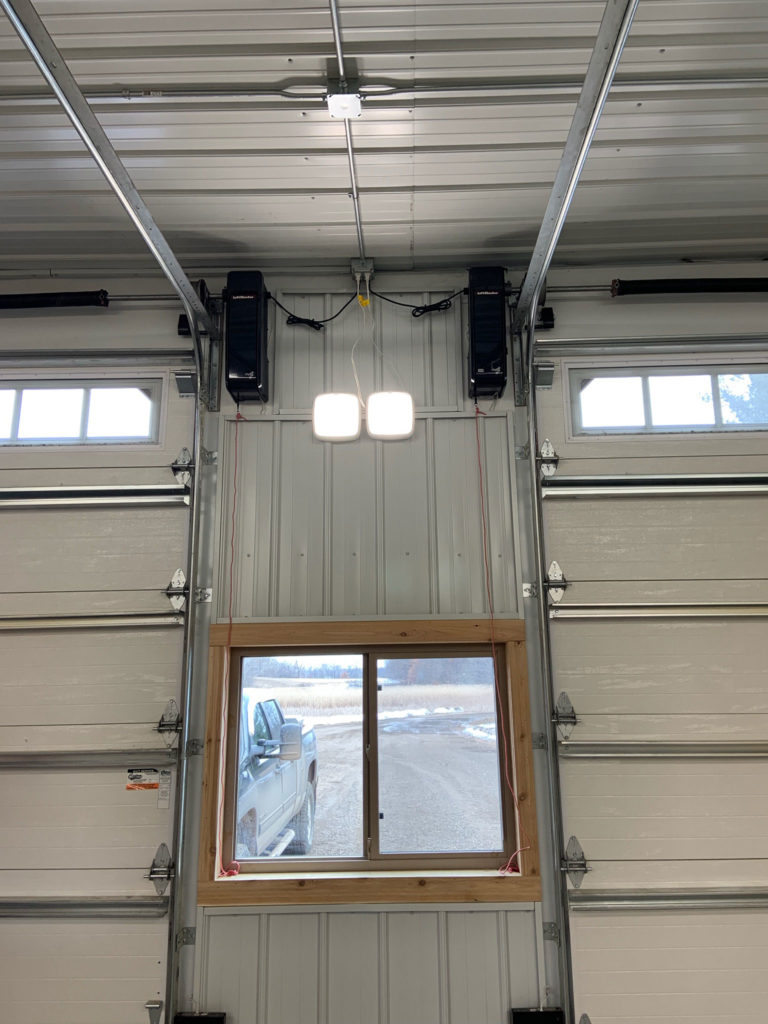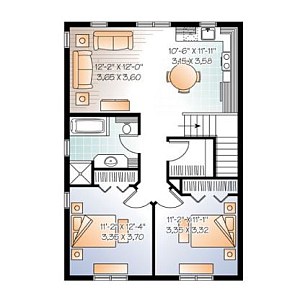
You have many options for adding an accessory dwelling unit (ADU), to your home. A few people convert an existing garage in to an ADU. Others build a new building from scratch. Whatever the case, there are a number of considerations that need to be made when choosing an ADU plan with garage.
The most common way to add an ADU to a home is by converting a preexisting garage into an ADU. This is a great option for many reasons. First, it allows you to save on construction costs because the garage already has a shell that you can build on top of. You can avoid additional excavation costs. Third, it can be a good way to discreetly add density to your neighborhood.
Adding an ADU to your property can increase the value of your home and allow you to welcome aging parents, grow your income with extra rental revenue, or create space for yourself. This can also be a great option to those who have young children and want to move one day.

Some ADUs can be attached to the house, while others may be attached above or below it. This will vary depending upon where you live and how large your lot is.
It's a good idea for you to apply for planning permission before adding an ADU to your house. If you don't have this approval, the city will be able to deny your plans or charge you unreasonably high fees for permits and utility connections.
Before you begin, it is important to confirm that your neighborhood does not have an ADU building code. There are some restrictions on the number of ADUs allowed in a neighborhood. You may need to have your plans checked by a professional to ensure you don’t exceed this limit, or risk having your project rejected due to a lack of permits.
Accessory dwelling units are a rising real estate trend in the United States and Canada. These units can be used as secondary or primary dwellings in shared buildings. They are becoming more common in urban areas as they are cheaper than single-family detached homes. This makes them a popular choice for families looking for extra space and rental income to support their mortgage.

You can choose from a wide range of ADU plans with garage that will suit your needs and budget. These plans include garage conversions as well as lean to ADUs and saltbox ADUs.
The Saltbox ADU is a unique design that references all-American sheds and lean-to barns. The Saltbox ADU has a small footprint and is ideal for many situations.
It can be used to create a studio, guest house, cottage or apartment. It features a kitchen and bathroom along with a bedroom and living area. It can be a wonderful addition to any home especially in urban locations, where it can sometimes be difficult to find housing.
FAQ
How do I know if my house is in need of a renovation?
You should first check to see if your home has had any recent updates. It may be time for a renovation if your home hasn't been updated in a while. If your home appears brand-new, you might consider a renovation.
Your home's condition is also important. If there are holes in the drywall, peeling wallpaper, or broken tiles, it's likely time for a renovation. If your home is in good condition, it might be worth considering a remodel.
You should also consider the overall condition of your house. Is your house structurally sound? Are the rooms well-lit? Are the floors clean? These questions are critical when deciding what type of renovation you should do.
Why should I renovate my house instead of buying a new one.
While houses may get more affordable each year, the square footage you pay is still the same. You may get more bang for your buck but you still have to pay for extra square footage.
It is less expensive to maintain a house that does not require much maintenance.
Remodeling instead of buying a brand new home can help you save thousands.
Remodeling your home can make it more comfortable and suit your needs. You can make your home more comfortable for you and your family.
What is the cost of tile for a shower?
If you want to do it yourself, go big. A complete bathroom remodel is an investment. If you think about the long-term advantages of having a gorgeous space for years to follow, it makes good sense to invest quality fixtures.
The right tiles can make a huge difference in how your room looks and feels. This quick guide will help with your selection of the best tiles, no matter if you're looking for small or big projects.
Decide the type of flooring that you want to install. The most common options are ceramics, stone, porcelain, and natural timber. Next, choose a style such as a classic subway tile or a geometric pattern. Next, choose a color palette.
It is important to match the tile to the rest in a large bathroom remodel. You might choose white subway tiles in the bathroom and kitchen, but use darker colors in other rooms.
Next, calculate the project's size. Is it time for a small update to the powder room? Or, would you rather have a walkin closet in your master bedroom?
After you have determined the scope of work, visit local shops to see samples. You can then get a feel of the product and how it is installed.
You can also shop online to find great deals on porcelain and ceramic tiles. Many retailers offer free shipping or discounts on bulk orders.
How long does it typically take to renovate a bathroom?
It usually takes two weeks to remodel a bathroom. However, it all depends on how big the project is. For smaller jobs such as installing a vanity or adding an stall to the bathroom, it can usually be done in just a few hours. Larger jobs, like removing walls, installing tile floors and fitting plumbing fixtures, may take several days.
Three days is the best rule of thumb for any room. So if you have four bathrooms, you'd need 12 days total.
What are the largest expenses when remodeling a kitchen
There are several major costs involved in a kitchen remodel. These include demolition, design fees, permits, materials, contractors, etc. But when we look at these costs individually, they seem pretty small. However, when you combine them all, they quickly add-up to become very large.
The most expensive cost is probably the demolition. This involves removing old cabinets, appliances and countertops as well as flooring. Then you have to remove the drywall and insulation. You must then replace these items with new ones.
Next, hire an architect who will draw plans for the space. You will need permits to ensure your project meets the building codes. The final step is to find someone to carry out the actual construction.
Once the job is complete, you will need to pay the contractor. Depending on the size of the job, you could spend between $20,000 to $50,000. You should get estimates from multiple contractors before you hire one.
Planning can help you avoid many of these expenses. You might be able negotiate better materials prices or skip some work. If you know what needs to be done, you should be able to save time and money during the process.
For example, many people try to install their cabinets. People believe that this will save them money since they won't have to hire professionals for installation. They often spend more trying to install cabinets themselves. The time it takes to complete a job can be completed by professionals in half the time.
Unfinished materials can also be a way to save money. It is important to wait until all pieces have been assembled before buying pre-finished materials, such as cabinets. You can immediately use unfinished materials if you purchase them. And if something doesn't turn out exactly as planned, you can always change your mind later.
Sometimes, however, it's not worth all the effort. Plan is the best way to save on home improvements.
How much would it be to renovate a house vs. what it would cost you to build one from scratch?
A home's contents are removed, such as walls, floors, ceilings and plumbing. Gutting is done when you want to make some modifications before moving in. Due to so many factors involved in the process of gutting a property, it can be very costly. The average cost to gut home ranges from $10,000 to $20,000, depending on your job.
Building a home means that a builder constructs a house piece by piece, then adds windows, doors, cabinets and countertops to it. This is done usually after purchasing lots. Building a home usually costs less than gutting and can cost between $15,000 and $30,000.
It all depends on what you plan to do with your space. You will probably have to spend more to gut a house. You don't need to take everything apart or redo everything if you are building a home. You can build it the way you want it instead of waiting for someone else to come in and tear everything up.
Statistics
- Windows 3 – 4% Patio or backyard 2 – 5% (rocketmortgage.com)
- About 33 percent of people report renovating their primary bedroom to increase livability and overall function. (rocketmortgage.com)
- According to a survey of renovations in the top 50 U.S. metro cities by Houzz, people spend $15,000 on average per renovation project. (rocketmortgage.com)
- bathroom5%Siding3 – 5%Windows3 – 4%Patio or backyard2 – (rocketmortgage.com)
- Following the effects of COVID-19, homeowners spent 48% less on their renovation costs than before the pandemic 1 2 (rocketmortgage.com)
External Links
How To
How to remove tile grout from floor tiles
Most people don’t know what tile grouting is. It is used to seal joints between tiles. There are many types available today. Each is used for a specific purpose. We'll show you how we can remove grout from floor tiles.
-
Before you start this process, make sure that you have all the necessary tools. It is a good idea to have a grout knife, grout scraper, as well as some rags.
-
Now you must clean any dirt or debris under the tile. To remove grout, use the grout cutter and gently scrape any pieces. You must be careful not to scratch any tiles.
-
After cleaning everything, take out the grout scraper. Use it to clean up any grout left behind. Step 4 can be completed if you have no grout.
-
After all the cleaning is done, it's time to move on. One of the rags can be used to soak in water. Make sure the rag is fully wet. Make sure the rag is completely dry after it has gotten wet.
-
Then, place the wet towel on the joint where tile meets wall. Continue pressing down on the rag until you see the grout begin to fall apart. Slowly pull the rag toward you, and keep pulling back and forth until all of the grout is gone.
-
Continue repeating steps 4 through 5 until all grout is removed. Rinse the ragout, and repeat the process if needed.
-
When you are done removing grout, clean the tiles using a damp cloth. Let dry completely.